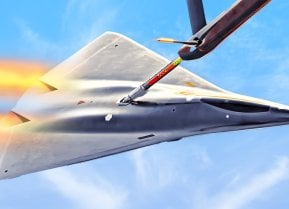Virginia-Class: The U.S. Navy Submarine That Freaks Out Russia and China
Submarines are among the most potent assets in a nation's arsenal, capable of lurking in the ocean's depths to strike enemy targets with precision. The U.S. Navy, boasting the world's most formidable submarine fleet, is set to enhance its capabilities with the new SSN New Jersey, a Virginia-class fast-attack submarine.
Summary and Key Points You Need to Know: Submarines are among the most potent assets in a nation's arsenal, capable of lurking in the ocean's depths to strike enemy targets with precision. The U.S. Navy, boasting the world's most formidable submarine fleet, is set to enhance its capabilities with the new SSN New Jersey, a Virginia-class fast-attack submarine.
-Designed to find and sink enemy warships, the SSN New Jersey, officially SSN 796, will join the Navy's fleet as the 23rd Virginia-class sub. With a $3.5 billion price tag and powered by nuclear energy, these submarines can operate for years without refueling, and the Navy plans to keep them in service well into the 2070s.
-Virginia-class subs, introduced in 2004, are equipped with an impressive arsenal, including Tomahawk cruise missiles and Mk48 torpedoes, making them a crucial component of U.S. naval power.
What Makes the Virginia-Class Submarine So Special?
Submarines are some of the most powerful weapon systems in a country’s arsenal. They lurk in the depths of the ocean, ready to pounce on enemy shipping and deliver high-precision missiles, including nuclear weapons, to enemy targets thousands of miles away.
The U.S. Navy has the most powerful submarine fleet in the world, with scores of vessels. And in a few weeks, the Navy will accept its newest submarine.
The SSN New Jersey
On April 6, the Navy delivered the SSN New Jersey at the U.S. Naval Weapons Station.
As a fast-attack submarine of the Virginia class, the SSN New Jersey will have a simple mission in the event of a conflict: find and sink enemy warships.
Officially named SSN 796 New Jersey, the nuclear-powered submarine will join the most populous class of submarines in the U.S. Navy. The Navy currently operates three classes of fast-attack submarines (Los Angeles, Seawolf, and Virginia) for a total fleet of approximately 50 submarines.
The Navy is planning to purchase a total of 66 Virginia-class submarines. As of February, 22 subs are in service, with the USS New Jersey soon to be the 23rd. In addition, 11 other submarines of the class are under construction, and four more are authorized by Congress.
The submarine has been years in the making. Its keel was laid in March 2019, and it comes with a price tag of approximately $3.5 billion. The new submarine will be the third warship to be named after the state of New Jersey.
Powered by nuclear energy, the Virginia-class submarines can stay afloat for years without the need for refueling and are mainly limited by their victuals.
The Navy plans to operate the class well into the 2070s.
The Virginia-class Submarines
Introduced with the SSN 774 Virginia in 2004, the Virginia class is the latest class of fast-attack submarines in the U.S. Navy. Built by General Dynamics Electric Boat Division and Huntington Ingalls Industries, the Virginia class is a powerful weapon system.

At almost 380 feet long, the class has a beam of 34 feet and a displacement of approximately 7,800 tons submerged. The submarine can operate at depths of over 800 ft (about 250 meters). It can reach speeds of more than 25 nautical knots (over 28 miles per hour), and it relies on one nuclear reactor with one shaft for its propulsion. In terms of manpower, Virginia-class submarines have a crew of 132, with 15 officers and 117 enlisted personnel.
But where the Virginia class shines is in its armament. There are five blocks, or modifications, with different combinations of weapons. Submarines carrying the Block I through IV weapons modifications have 12 Vertical Launching Tubes for Tomahawk cruise missiles and four 21-inch torpedo tubes that can fire Mk48 torpedoes or UGM-84 Harpoon anti-ship missiles.
Considering the restrictions imposed by the limited space, the Virginia-class can pack a healthy 25 torpedoes/anti-ship missiles and over a dozen cruise missiles. Block V will add more missiles through the Virginia Payload Module.
About the Author
Stavros Atlamazoglou is a seasoned defense journalist specializing in special operations and a Hellenic Army veteran (national service with the 575th Marine Battalion and Army HQ). He holds a BA from Johns Hopkins University and an MA from the Johns Hopkins School of Advanced International Studies (SAIS). His work has been featured in Business Insider, Sandboxx, and SOFREP. Email the author: [email protected].
All images are Creative Commons and/or Shutterstock.


